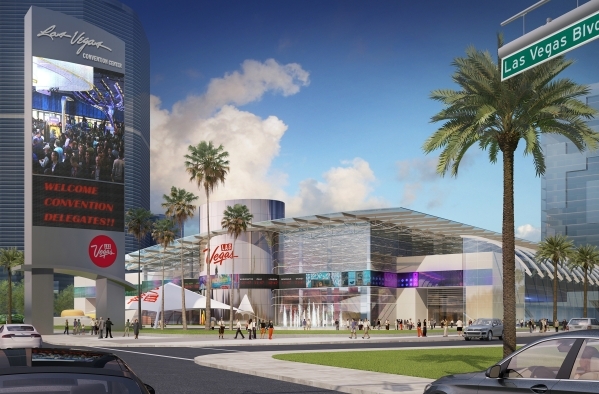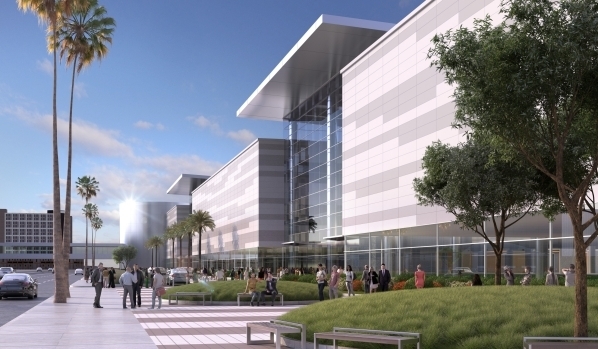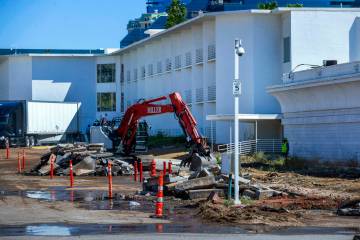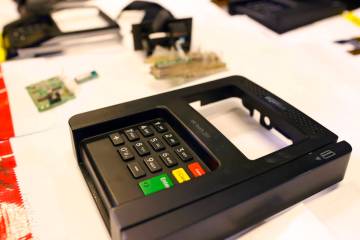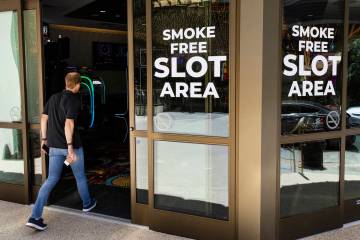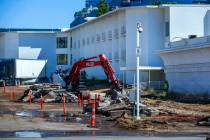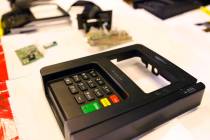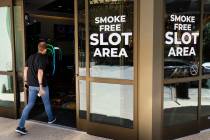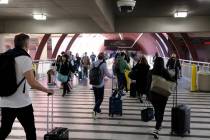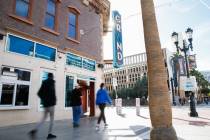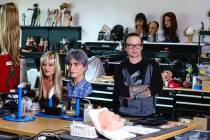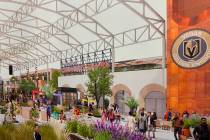Panel members get detailed view of $2.3B Las Vegas Convention Center redo
Representatives of Gov. Brian Sandoval's Southern Nevada Tourism Infrastructure Committee got their most detailed look to date at plans for the $2.3 billion Las Vegas Convention Center expansion and renovation project on Thursday.
The 11-member committee had requested additional details of the project at its October meeting and the Las Vegas Convention and Visitors Authority obliged with a detailed description of plans, a timeline for bidding and construction and a snapshot of how planners arrived at cost estimates.
The committee took the information under advisement in the fourth of five fact-finding sessions and will revisit it early next year when it undertakes prioritization of projects and identifying potential funding sources. In addition to the Convention Center project, the committee is reviewing the need for a stadium venue, transportation and mass transit improvements in the resort corridor and needs to improve pedestrian flow on the Strip and in downtown Las Vegas.
The Convention Center project is a four-phase program, with the first phase underway with the $182.5 million acquisition of the Riviera property earlier this year.
That phase, which is fully funded, included the acquisition of the Riviera, its demolition and the conversion of the grounds to outdoor exhibit space in time for the March 2017 ConExpo/Con-Agg construction equipment trade show.
The second phase, with an $860 million budget and projected to run from late 2016 through the end of 2020, would include the construction of 1.4 million square feet of exhibition hall, prefunction areas, meeting rooms, service areas and support and circulation space. The exhibit hall would occupy 600,000 square feet.
The new exhibit hall facility would be built on land currently occupied by parking lots on the northwest corner of Paradise Road and Convention Center Drive toward the existing Riviera parking garage.
The third phase, with a $540 million budget and projected to run from early 2020 to the end of 2022 would be a 3.8 million-square-foot renovation of existing convention facilities, which include upgrading existing exhibit halls, meeting rooms and support areas as well as the addition of new meeting rooms, a public lobby on the east side of the facility, additional support space and an indoor corridor connecting the existing North, Central and South exhibit halls.
The renovations would make the city's convention facility more competitive with new centers that have been built in other cities. In addition, the trade show industry has changed over the years, favoring more meeting rooms adjacent to convention halls, which are designed as part of the Las Vegas Convention Center plan.
The scheduling of construction — building the new facility first — would enable the city to continue to host existing major conventions without displacing them to other venues or cities.
Terry Miller, the Convention and Visitors Authority's hired project representative from Cordell Corp., showed committee members renderings of new facilities from Paradise Road and Las Vegas Boulevard.
The fourth phase of the project is unscheduled, unfunded and without detail and is anticipated as new improvements that would be built in the existing Riviera footprint.
Earlier in Thursday's meeting, representatives of Clark County and the City of Las Vegas told committee members about improvements that could improve the pedestrian experience on the Strip and in downtown Las Vegas.
County Manager Don Burnette told the committee that the county has already addressed some of the aesthetic issues that have surfaced on the Strip. The biggest problem now is a lack of police presence on Las Vegas Boulevard with 123 officers assigned over three shifts spread thinly along the 4.5-mile Strip.
Sheriff Joe Lombardo said he is projecting more than 140,000 calls for service on the Strip in 2015. He said that represents about a 6.6 percent increase over last year and 22 percent of his total resources. Lombardo added that in the first nine months of 2015, 76 guns were impounded during Strip incidents.
Lombardo recommended that the committee endorse a revenue stream for an additional police presence along the Strip when it makes its recommendation to the governor.
Later in the meeting, Clark County Commission Chairman Steve Sisolak, a member of the committee, recommended a future discussion about diverting some room tax revenue to fund additional Metro officers.
Burnette told the committee the county already is addressing the issues of separate news racks by consolidating them into single county-owned and maintained racks; littering, by requiring hand billers to clean up discarded handbills; pedestrian safety with street performers blocking access; and illegal commercial sales on public rights-of-way.
City Manager Betsy Fretwell and Public Works Director David Bowers told the committee that the city is addressing pedestrian issues with a variety of strategies.
The city has invested $47 million in streetscape improvements, some concluded and some under construction. Those improvements will widen sidewalks and install trees for shading, increase lighting levels and accommodate multimodal transportation options. An additional $177 million investment is programmed over the next five years.
The city also has adopted a busker ordinance to improve pedestrian circulation in the Fremont Street Experience, has implemented packaged liquor requirements, increased Metro patrols and installed 22 cameras.
The city is working on a downtown Las Vegas transportation circulator system and have increased taxi staging areas at downtown hotel properties.
The committee will next meet in late January with its final fact-finding meeting on street, highway and transit needs for the resort corridor.
Contact reporter Richard N. Velotta at rvelotta@reviewjournal.com or 702-477-3893.



